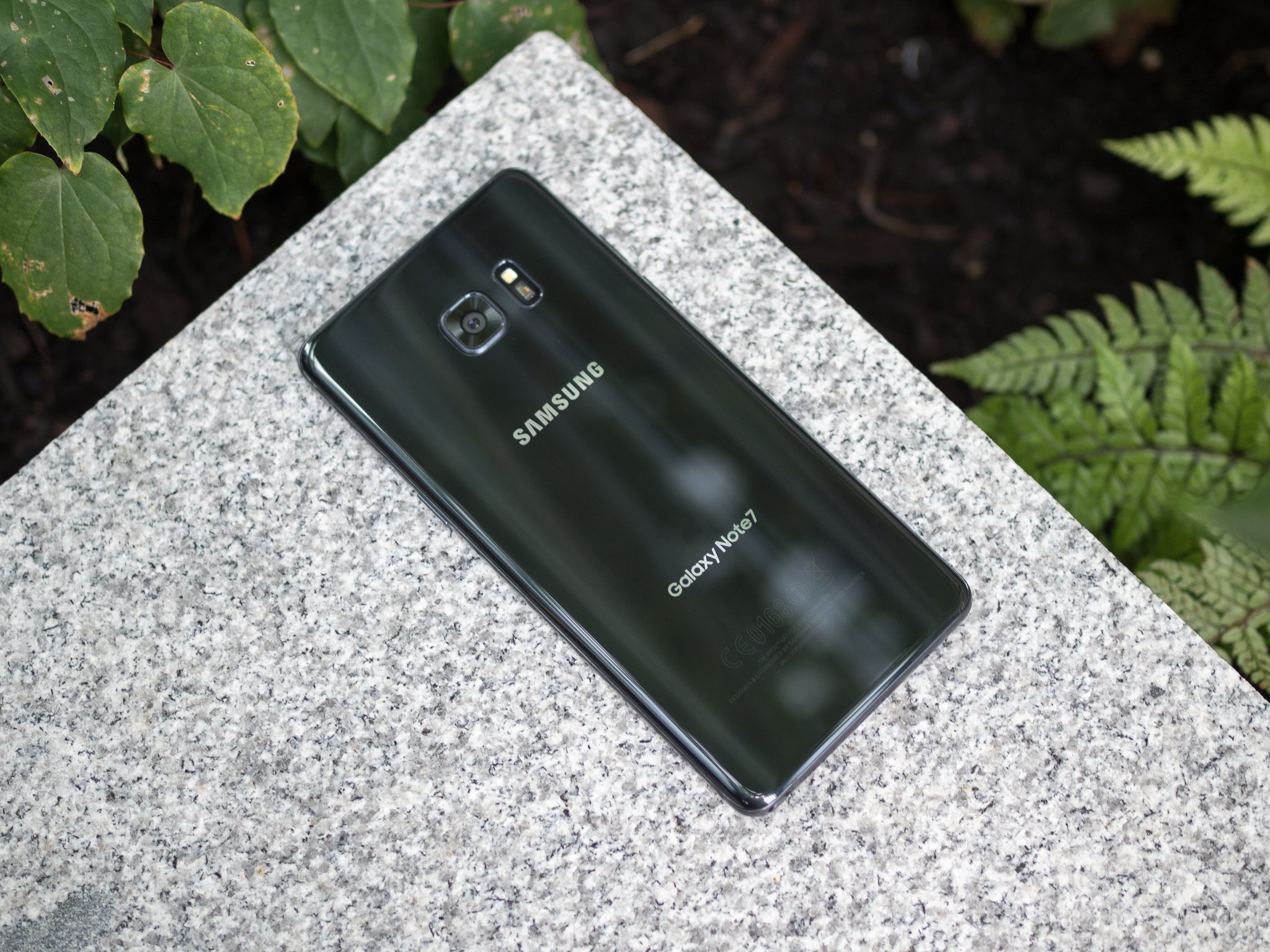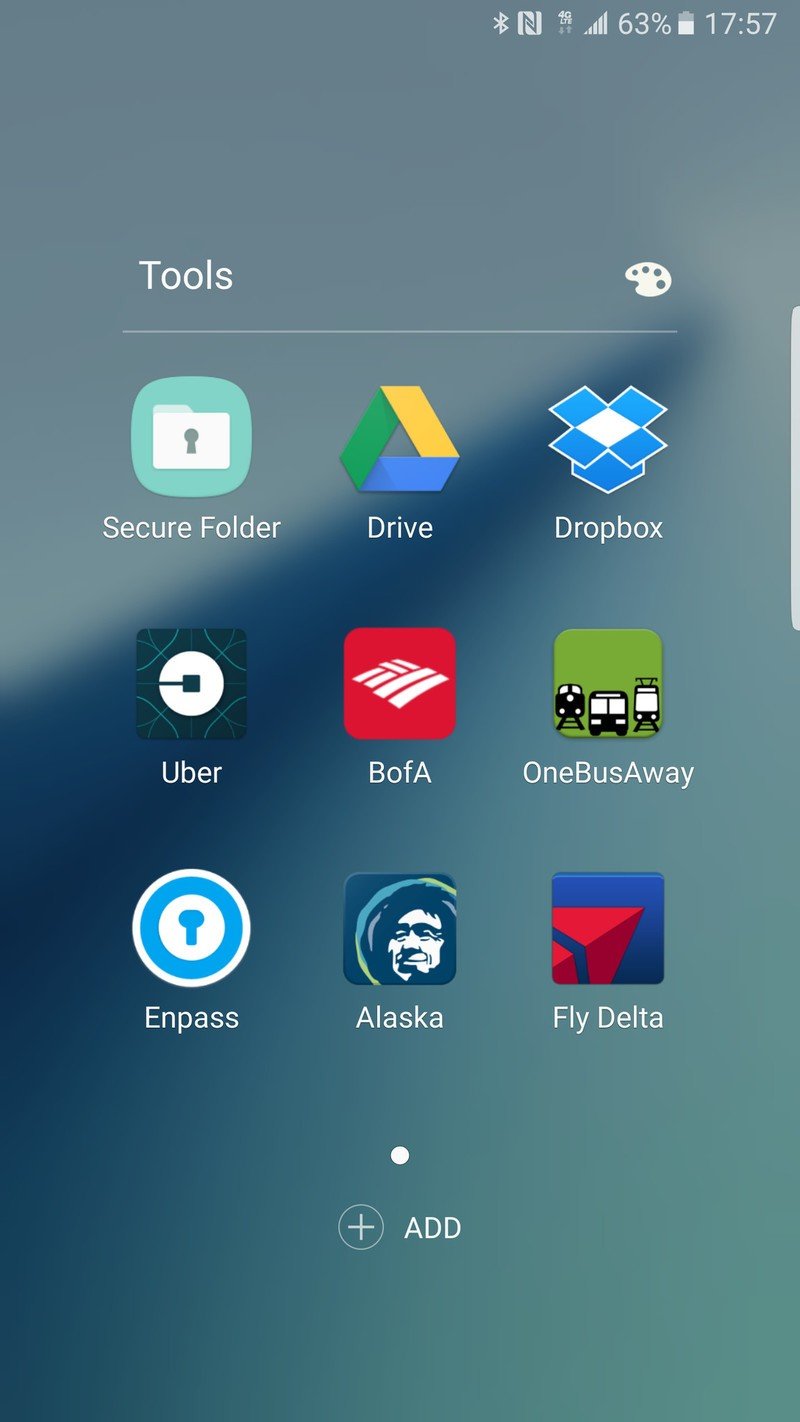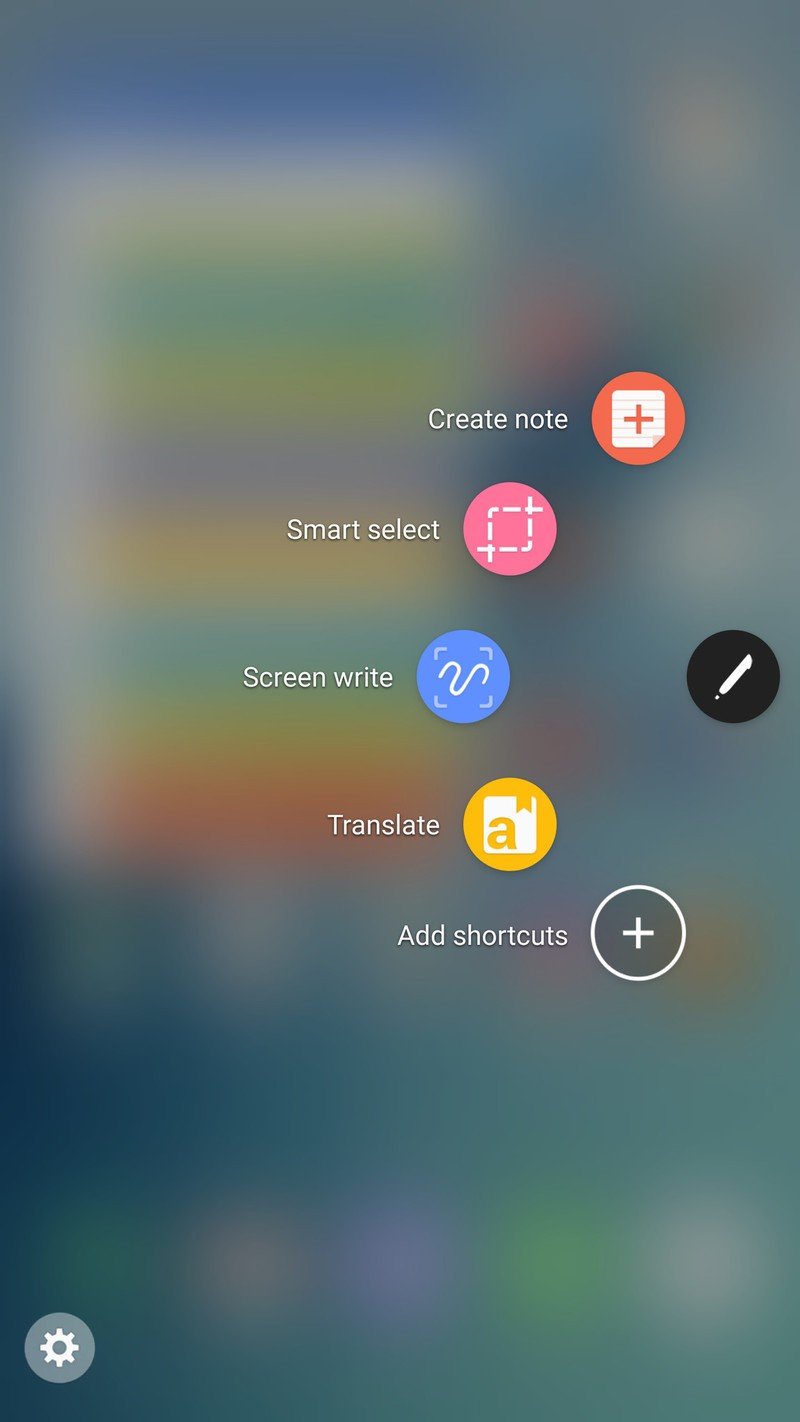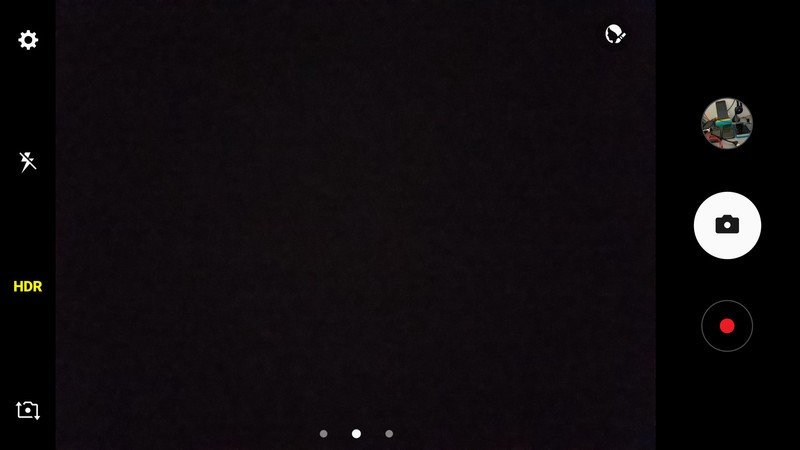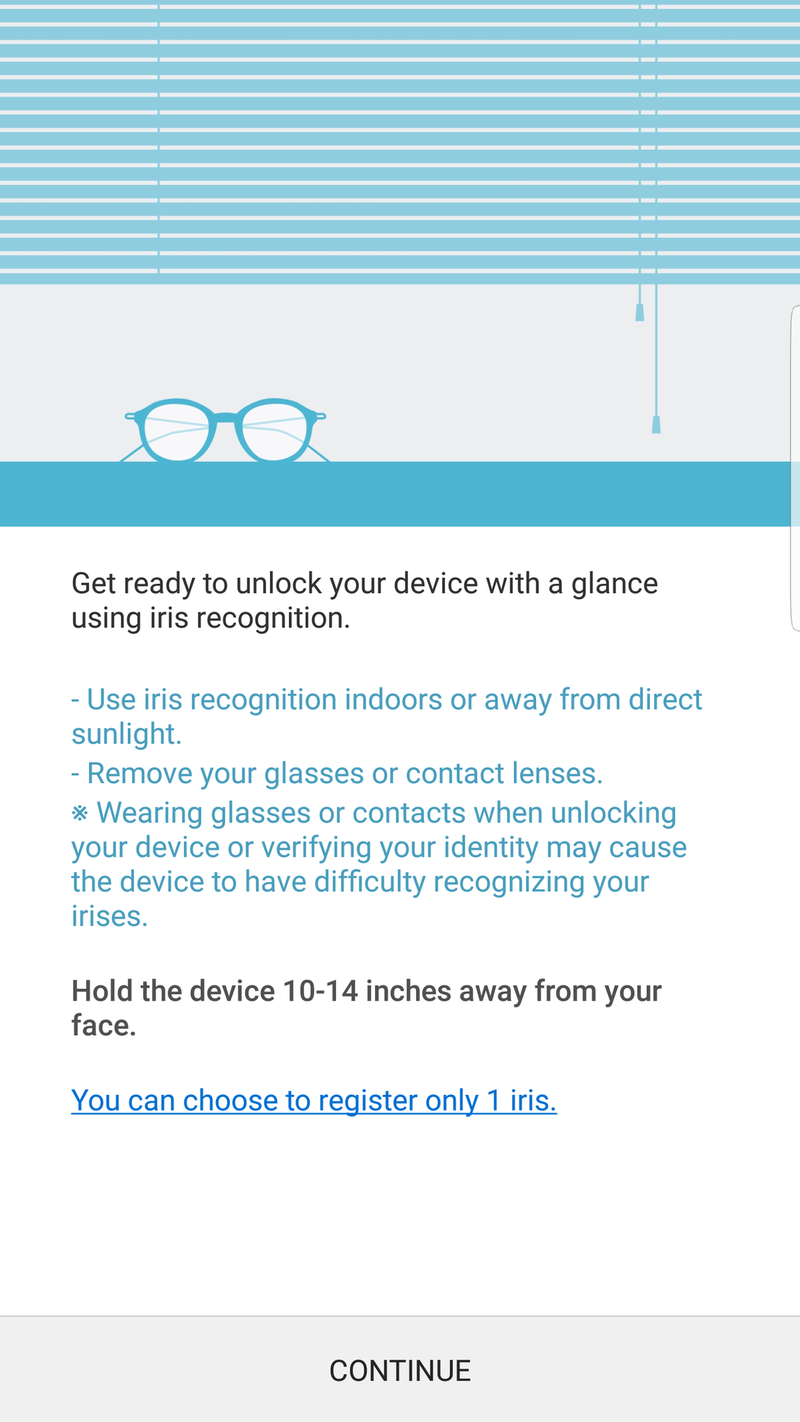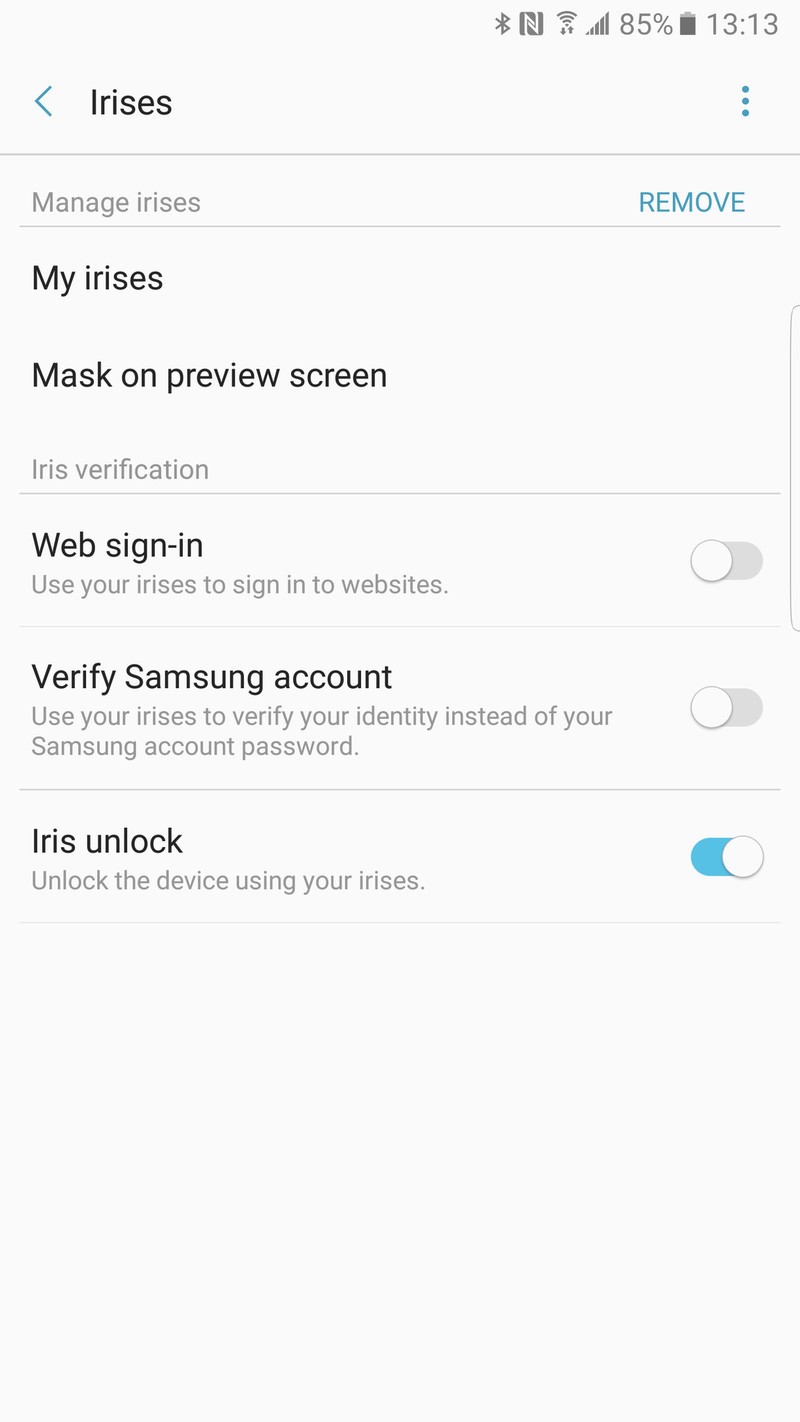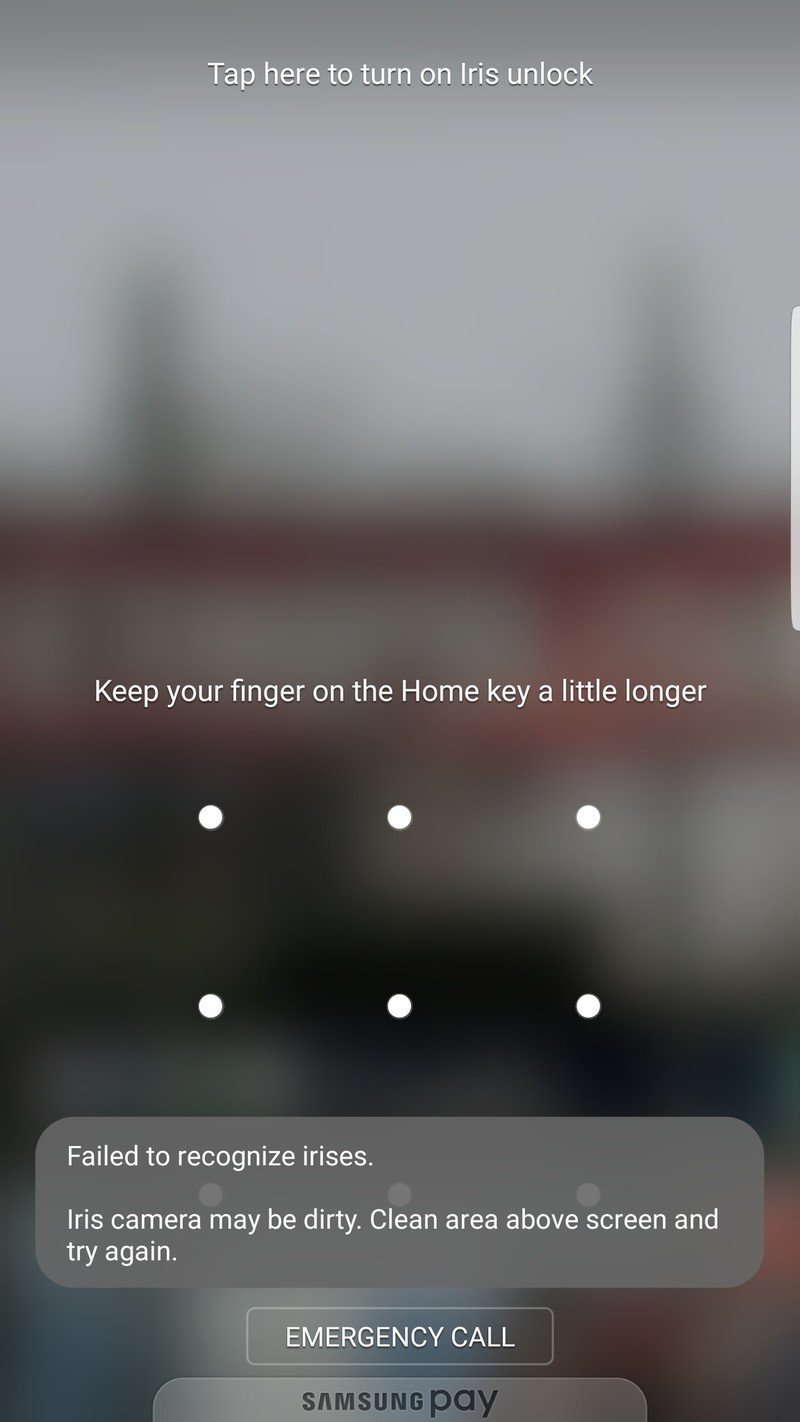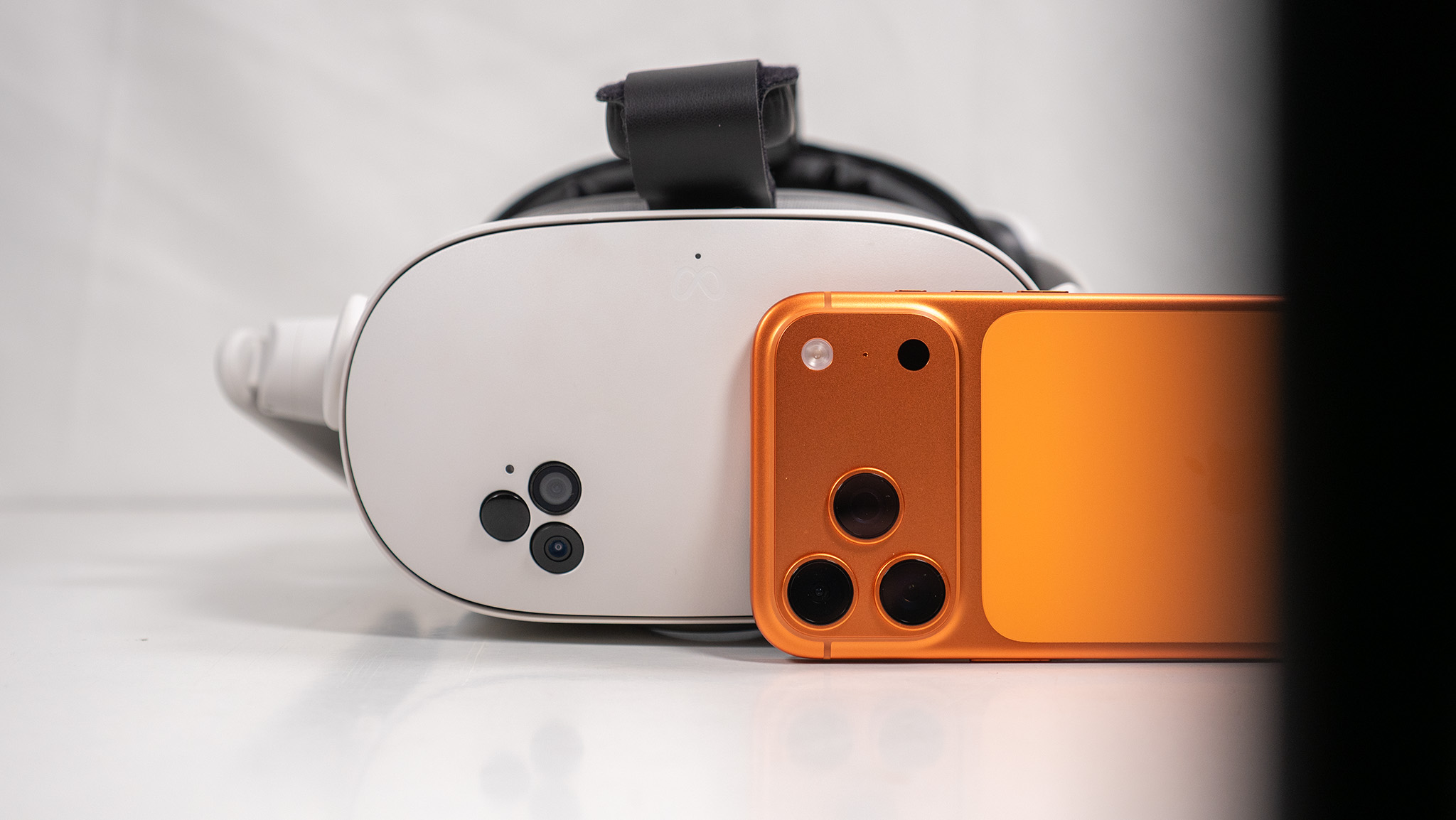Product advisory: After a recall due to exploding batteries, and a subsequent batch of replacement Galaxy Note 7s catching fire, Samsung has permanently discontinued the Galaxy Note 7. You won't be able to buy one from your carrier or other major retailers, and you should not buy a Note 7 second-hand. Catch up on how we got to this point with everything you need to know about the Galaxy Note 7 recall.
The quick take
Even though the Note 7 doesn't immediately strike you as an altogether stand-out device like its predecessors, it's still an amazing phone that stands atop others available today. The Note 7 takes the Galaxy S7's formula of minimizing gimmicks in order to offer a fantastic core smartphone experience, and does so with very few, if any, missteps. It checks all of the boxes, and goes above and beyond expectations in just about every way. It's the best Galaxy Note to date.
The Good
- Beautiful hardware
- Industry-leading display
- Great camera
- Unique S Pen features
The Bad
- Still too big for some hands
- Very expensive
- Carrier bloatware still horrible
- No U.S. unlocked model
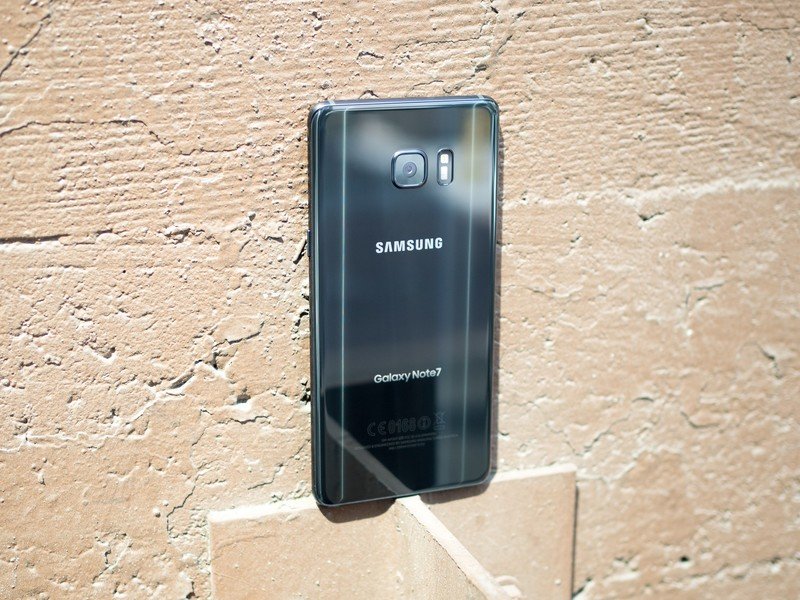
The best Samsung phone of its time?
Samsung Galaxy Note 7 Full review
When Samsung came out ahead of the Galaxy Note 7's unveiling and announced that its latest Galaxy Note would skip a numerical generation to fall in line with the Galaxy S7 and S7 edge launched earlier this year, it was a great bit of foreshadowing. The combination of weeks of leaks and that subtle announcement of the bump past Note 6 and straight to Note 7 should've given us a good idea that we were going to see a Galaxy Note 7 not unlike the Galaxy S7 edge that came just six months earlier.
And then, that's pretty much what we got.
Get the latest news from Android Central, your trusted companion in the world of Android
The Galaxy Note 7, part of the Note line that historically has been in its own class, generation after generation incapable of really being compared directly to any other phone, now shared a large portion of its specs, design and DNA with a non-Note phone. The Note fans immediately reacted negatively, worried that if they were to buy a Galaxy Note 7 they wouldn't necessarily be on the bleeding edge of technology, differentiated with a mound of new specs and features beyond that of what Samsung or any other company could pack into a phone. Reaction from the general populous, though, was set to be a bit more realistic — simply seeing a beautiful phone with all of the features they wanted, badged with a name they associated with really nice smartphones.
Yes the Galaxy Note 7 is very much a part of the Galaxy S7 and S7 edge family, no longer on a disparate path. The number 7 appended to its name sets that expectation, the outside reaffirms your suspicions and the experience solidifies them. But that isn't a bad thing, and it doesn't mean there isn't a ton to get to know about the Galaxy Note 7, including how it indeed still differentiates itself from the world of high-end Android phones, Samsung or otherwise. I'm here to tell you just where the Note 7 fits in this world — read on.
About this review
I (Andrew Martonik) am writing this review after a week using a T-Mobile (G930T) version of the Galaxy Note 7, which was provided to Android Central by Samsung for review. The review was conducted using the T-Mobile network in the greater Seattle, WA area. The phone arrived on software version UVU1APGC, and was not updated during the course of the review.
Pretty pictures
Samsung Galaxy Note 7 Video review
Before I get deep into the details writing about the Galaxy Note 7, I encourage you to check out a full video review recap of the phone. Check it out above, get a feel for the phone, and then follow along as I break down all of the details of the latest Galaxy Note!
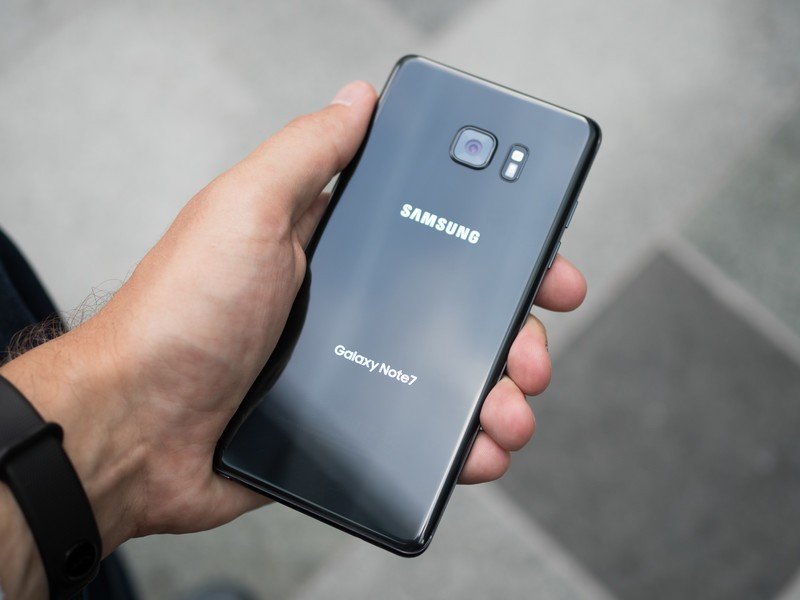
More change than you think
Samsung Galaxy Note 7 Hardware
To dismiss the Galaxy Note 7 out of hand (or ... in your hand?) simply because it bares an initial resemblance to the Galaxy S7 edge is taking the easy route. Samsung has simply improved this metal-and-glass design with each iteration — this is the largest generation-to-generation design change yet, and easily the best executed as well.
The Note 7 lost a considerable amount of metal in its frame compared to the Note 5, and it's immediately noticeable when you pick it up. Whereas the Note 5 very much felt like a primarily metal phone that simply had its back replaced with a piece of glass, the Note 7 feels like a glass phone with only a necessary amount of metal sandwiched in between the panes.
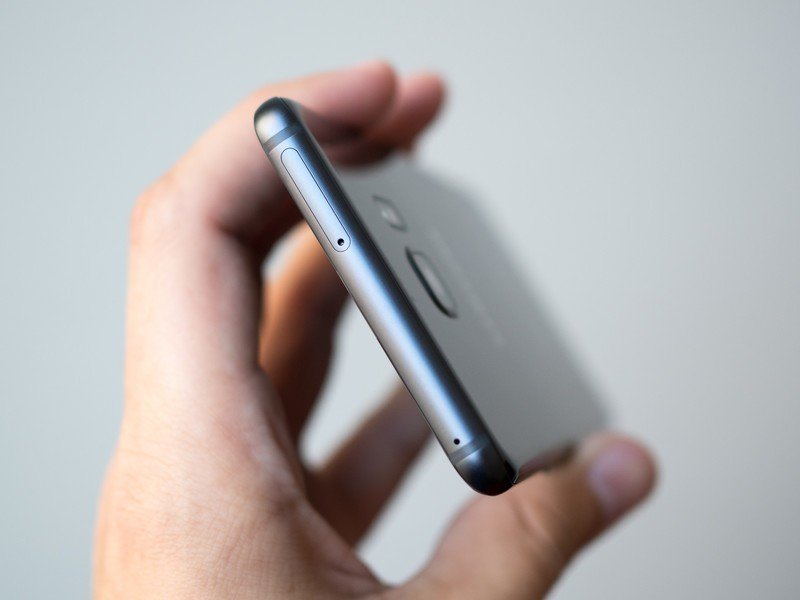
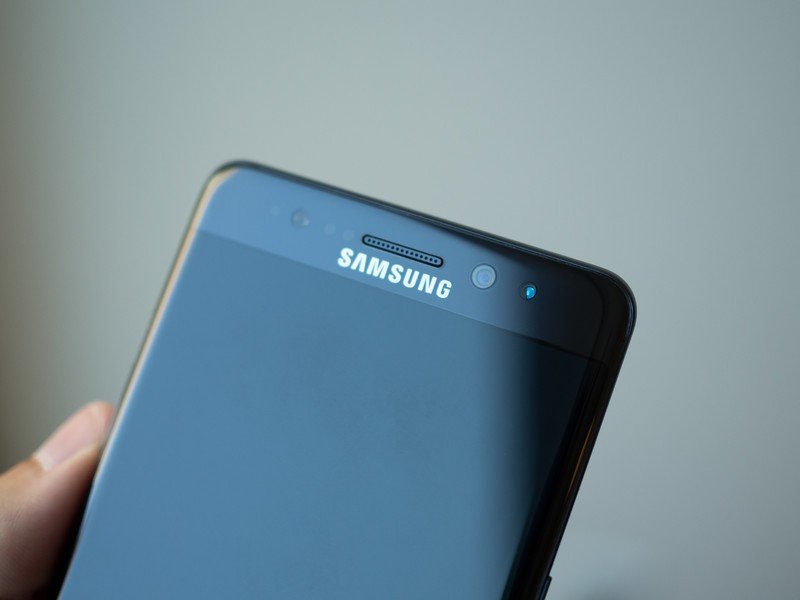
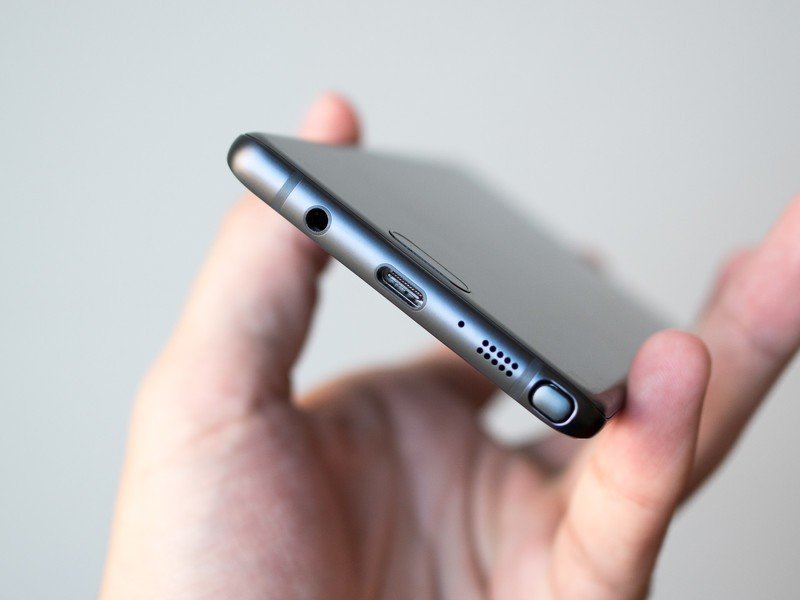
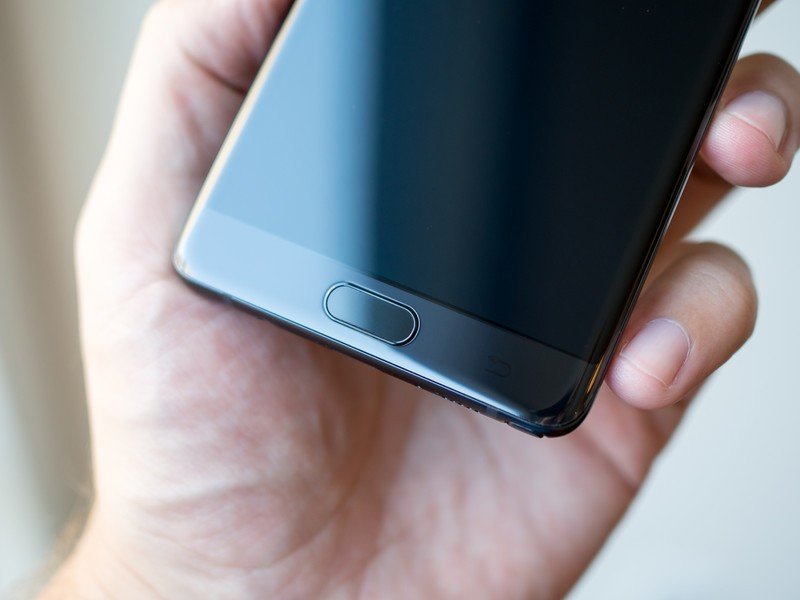
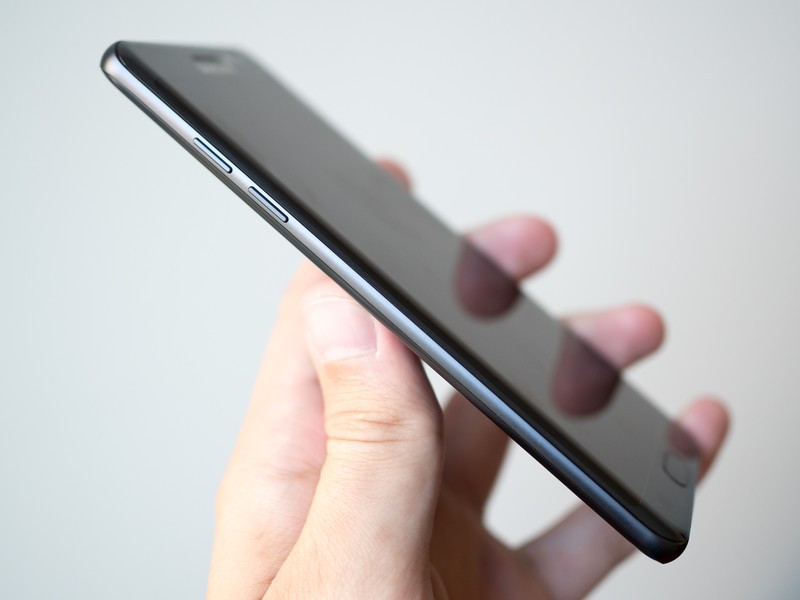
The new curved display and mirrored curved back encroach on the now much-thinner metal strip along the sides of the Note 7, and the theme continues onto the top and bottom where the metal no longer extends up and over the glass but instead recedes to let the glass take over the edge. You won't find bevels on the top and bottom of the metal anymore, either: just a smooth, gently rounded edge that meets up with the metal seamlessly.
And though there's less material here, what's left there is stronger than any previous Samsung phone — the Note 7 uses a 7000 series aluminum for its frame, some of the hardest you can get and the same used in the iPhone 6s. Not only is it tougher to scratch and ding in daily use, it'll also cut down on flex in the body of the phone.
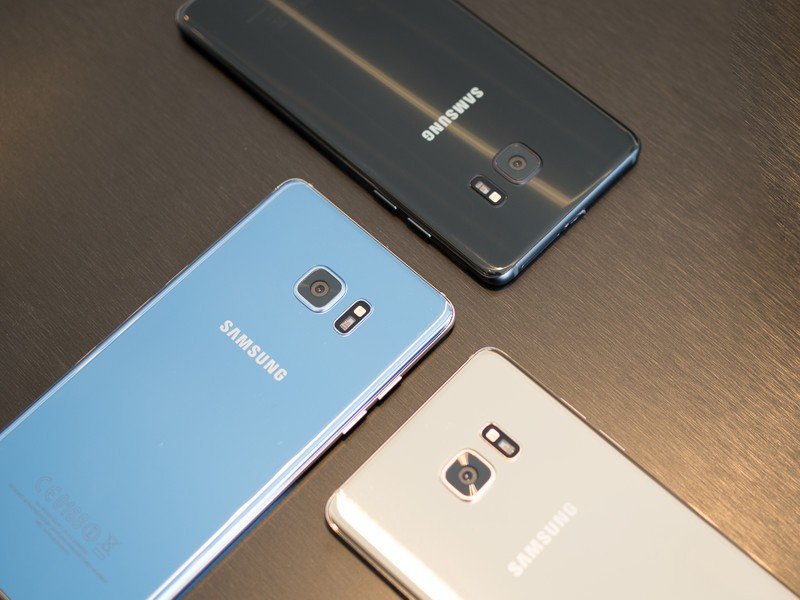
Now, I have to talk about the color options available for the Note 7. The model I'm reviewing here, black onyx, is far and away my favorite of the bunch. The black-on-black design is so sleek, so monolithic and so stealth that I honestly can't imagine buying the silver, gold or blue coral versions, as nice as they may be in their own right. This color combination is a perfect match for the smoother, simpler hardware the Note 7 offers. It also shows Samsung's willingness to mix things up with the color of both the glass and metal, as each of the four (three in the U.S.) available colors has a different anodization process applied to the aluminum — a nice treat.
Samsung's design team talked at length about the symmetry of the Note 7 at the phone's launch event in New York City, and it's something that actually makes a notable difference in how compact the phone feels. The smaller amount of metal on the sides of the phone paired with the dueling glass curves let the phone nestle deep into your palm, making it a bit less awkward to reach across what is still a very large phone.
- 5.7-inch SuperAMOLED
- 2560x1440 (QHD) resolution
- Gorilla Glass 5
- Dual curve screen
- 12MP, f/1.7, OIS rear camera
- 5MP, f/1.7 front camera
- 3500 mAh battery
- Non-removable
- Fast Charging
- Wireless charging
- Snapdragon 820 processor
- 4GB RAM
- 64GB storage
- microSD card slot
It's absolutely gorgeous, and easier to handle than previous Notes
Because of these subtle design changes, I find the Galaxy Note 7 easier to use and manipulate in one hand than the Galaxy S7 edge, which I consider a huge win. This is still a big phone, no doubt, but I think at this point people generally know that they're getting into some sort of trade-off situation where they're getting a larger screen — and its associated benefits — in turn for slightly decreased usability.
Over time more and more people seem to be fine with moving to a larger screen, and Samsung has at the same time met them from the other side with a more compact device. Very much in the same vein, consumers are willing to take trade-offs in order to have a more beautiful phone in their hands and on the table in front of them.
The hardware changes integrated into the Note 7's design have accomplished mightily on both fronts. It's a great-looking smartphone, at any size, and while it clearly isn't designed 100% from a functional standpoint, it strikes a wonderful balance.

Same wonderful display
Oh Samsung, you spoil us so much with these SuperAMOLED displays. You just can't do better when it comes to a smartphone screen, and no other company comes close. The 5.7-inch 2560x1440 screen (with due credit to Samsung's software tuning) is so amazingly bright and colorful, with great viewing angles, that I can't really ask for much more at this point. Daylight visibility is best in class, and Samsung's software does a good job with automatic brightness control in other situations to boot.
Samsung's SuperAMOLED continues to destroy the competition
But the magic of the panel itself isn't the only reason why the Note 7 offers such a great viewing experience. You also have the curving of the screen on both sides, something of course introduced back on the Galaxy S6 edge but has been done much more subtly on the Note 7. With a tighter radius and overall smaller curve when compared to the Galaxy S7 edge, the screen curves simply provide a functional narrowing of the device, without the downside of accidental palm touches and missed swipes. The visual effect the small curve provides is fantastic as well, in that it really gives the feeling that the Note 7 barely even has bezels on its sides.
And of course the Note 7 is also the first phone to incorporate Corning's Gorilla Glass 5, which as is the case every year steps things up with even more robust scratch and shatter resistance. This is hardly a "shatterproof" phone, and believe me it will pick up scratches over time, but it never hurts to have increased damage resistance on a phone that has two huge panes of glass with curved edges.

The move to USB-C
On the face of it it seems like such a small thing for the Note 7 to ship with a USB-C connector instead of the tried-and-true Micro-USB. Nobody could've blamed Samsung much for sticking with Micro-USB considering its long legacy of accessories that use the port, but seeing such a big company finally shift to the new USB standard is great — particularly as it likely means that all of its phones going forward will use USB-C.
It's handling the transition in the right way, it seems, as well. You'll find a USB-C to Micro-USB adapter in the box with your Note 7, and Samsung has released a new version of its Gear VR headset that adds (among other features) a swappable plug that lets it work with both old and new Galaxy phones. For now its other accessories like batteries still charge up over Micro-USB, but these will start to come with adapters in the box as they eventually transition to USB-C also.
The benefits of USB-C like the fact that it's reversible and can carry more data are easy to understand, but that still won't overcome the feeling amongst some owners that moving to USB-C from their legacy of Micro-USB accessories will be a pain. Years of buying phones with Micro-USB ports has left many of us with a pile of cables, batteries, docks and plugs that are now useless, and that's going to be a realization that may hurt Samsung a bit — but it had to rip the band-aid off at some point, and it might as well be with a phone that people are already spending $850 on. You can afford a couple new cables.
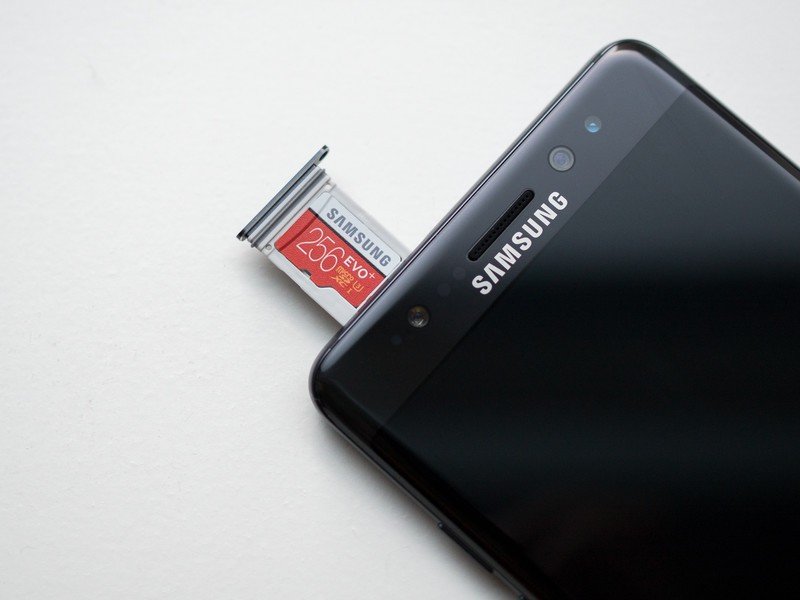
Return of the microSD card slot
After Samsung took a 180-degree turn with no expandable storage and instead offered internal storage options up to 128GB in its 2015 flagship phones ... customers spoke in words and with their wallets: "We want an SD card slot back." Whether it was technically or philosophically the "correct" move for Samsung is irrelevant — removal of the SD card slot from its 2015 flagship Galaxy phones was a failure. That much is clear now, and the SD card slot is back.
With 64GB internal, even fewer people will need the SD card slot
Functionally, things pick up right where they left off on the Note 4 when it comes to adding an SD card to the phone. Despite running Marshmallow there's no Adoptable Storage option here — the SD card simply acts as a standalone volume to store media and some apps if you choose.
It's a good way to fill up a card on your computer and transfer files over to your phone for viewing or listening, but is altogether a second-class experience in terms of actively using it for media you create on the Note 7 itself. There are confusing (and entirely necessary) restrictions on which apps and parts of apps can be moved to the SD card, as well as usability hurdles when it comes to capturing photos and videos directly to the card.
With the Note 7's bump up to 64GB of internal storage there are even fewer people who will need an SD card, so I would caution you to just give the phone a try and see how much you fill it up before buying an SD card just because it has the capability. After installing all of my usual apps, I still had 45GB free.
Waterproofing
This is the very first waterproof Galaxy Note. And it shouldn't come as a surprise, as this has really been one of the pinnacle features that Samsung has hung its hat on since launching to a widespread customer base earlier this year with the Galaxy S7 and S7 edge.
Just like those phones (and the "Active" ones before them), the Galaxy Note 7 has what's called an IP68 rating, meaning it can handle both dust and water under some pretty standard situations. The big one is water resistance, where the phone can handle 30 minutes submerged in up to five feet of water. While that doesn't mean it can replace your GoPro camera, or serve as a "rugged" phone, it will absolutely handle a drink being spilt on it at dinner or taking a quick dunk in the shallow end of a swimming pool.
Over the course of this review I exposed the phone to plenty of water and it just kept on going, including giving it a shot at recording video under water, which it actually accomplished nicely unlike my previous tests with the Galaxy S7 edge. I think every single high-end phone should be resistant to water in some capacity, and it's great to see Samsung continue to carry the feature on its best phones.

A stealthy update
Samsung Galaxy Note 7 Software
It's easy — and understandable — to focus on the hardware story in the Galaxy Note 7, but Samsung also took this launch as an opportunity to roll out a pretty considerable software redesign as well. Having Android 7.0 Nougat and all of its associated software update headaches on the horizon it would have been completely understandable to save these changes to coincide with that large platform release, but we get them early here built into Android 6.0 Marshmallow.
A fresh look to TouchWiz
The biggest visual changes come down to the launcher, notification shade and settings area. The launcher is quite similar, but has once again changed the look of the default icons and folders — I have to say they're at least improved, if still a bit forced, though I still prefer Google Now Launcher's overall look.
The notification shade is both simpler and more compact, with a flat white background acting as a canvas for thin lines and iconography in grey and light blue. It now takes an extra swipe to access screen brightness, but the buttons are still configurable and provide extra information when tapping them before going into the full settings screen, not unlike the way we see things done in Nougat.
The cleanest and simplest version of TouchWiz yet
The simple white background and limited combination of grey and muted colors continues into the settings area, which has taken a miraculous turn toward simplicity. Rather than dealing with a seemingly endless scrolling list or group of tabs, the Note 7's settings almost fit on a single page without scrolling. They're all rolled up into broad categories like "Connections," "Display" and "Device maintenance," with the most commonly used features in each section listed under the header. The settings within each category are more logically listed, and most categories have a "Looking for something else?" list at the bottom with suggestions for similar settings that are now found in other areas.
Better colors, more compact displays and simpler overall layouts receive two big thumbs up from me, even though they're still joined by lots of duplicative Samsung apps and carrier bloatware to wade through. If Samsung could also scale back on that front, I would be even happier with the software. But even as it stands now, Samsung has quietly made a set of really great changes to the interface we interact with dozens of times a day, and it's worthy of applause from me.

New features
I greatly appreciate the visual cleanup of many parts of the interface, but going beyond that Samsung has also added or revamped several system-level features as well.
First is a proper "blue light filter," which of course plays to the popular notion of reducing the amount of blue light you're viewing from screens and how it affects your sleeping habits. The blue light filter can be toggled on at any time, with an adjustable intensity, to make your screen a bit warmer when you want to reduce eye strain. But more importantly, you can set it to change temperature on a custom schedule or even let it automatically come on at the local sunset time and turn off again at sunrise. Together with automatic brightness, I found it a nice automatic way to help my eyes transition to nighttime viewing.
A few new features that you don't notice on Day 1, but are great to have
Samsung has also doubled down on its Power saving mode, which now has customizable levels to extend your battery while keeping the features you want most turned on. Before turning on Power saving mode, you can select to limit max screen brightness between 80 and 100%, set the screen resolution to HD, FHD or QHD, limit device performance overall, and prevent background network usage from apps. With each parameter you'll get an estimate of how much battery you'll save by enabling it, and once you set your custom profile you can turn it on and off as you see fit. This is much better than the all-or-nothing Power saving mode before, and will give enthusiasts plenty of ways to tweak things.
Samsung's new Always On Display mode has also arrived on the Note 7, though it's also picked up a couple of key advantages that make it more functional than what's available on the Galaxy S7 and S7 edge. You get many of the same clock layouts, but now those layouts are accompanied by icons for all notifications that you receive — and you can double tap an icon directly on the "off" display to open the associated app. It's nowhere near as useful as Moto Display, but it makes you a bit less guilty about burning some battery running Always On Display.
Even without a dramatically curved display, and with all of the extra software already on tap for the S Pen, Samsung still decided to graft the "Edge UX" software from the Galaxy S7 edge to the Note 7. After six months using the GS7 edge I still haven't found a use for the edge screen, aside from occasionally finding it useful to quickly pull up a favorite contact to dial. Everything else it can offer me is less useful than just launching an app, and more hassle at the same time. Things haven't changed on the Note 7, and I wouldn't be surprised if people went a step further and turned off the edge screen software entirely — there are already great ways to interact with your apps without trying to reinvent the wheel and give you yet another launcher paradigm.
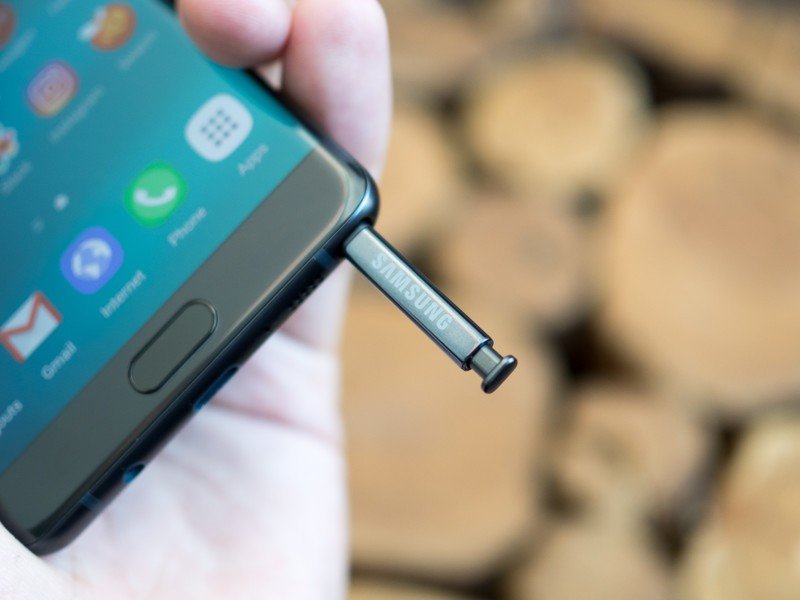
Better S Pen hardware, simplified software
The Galaxy Note 7 still offers easily the best stylus experience of any smartphone, though initially you won't find too much different from the Note 5. But under the skin, you'll find the S Pen has doubled its pressure sensitivity to 4096 levels, narrowed the point for more precise selection, and also notably improved the tracking speed on the screen. On the software side, you still have screen-off writing (even when using Always On Display) for taking quick notes, as well as Air Command for the most-used S Pen features, but where things change is the move from disparate S Pen apps to a single Samsung Notes app on the phone.
I'm not convinced S Pen usage is high, but this is the best possible experience
In Samsung Notes, you can take written notes, do quick drawings, work with images and pair those notes with voice messages — all functions that used to take up their own separate apps. Even if you don't hop into Samsung Notes for explicit note taking, you can still launch Air Command to quickly write on the screen, or use one of the new S Pen features like the live translation tool, magnifier or GIF maker.
I still haven't been able to work the S Pen into my daily life, but you're getting it with the phone either way so you might as well give it a try. It's great for signing documents and quickly annotating a screenshot when you need extra tools to get your point across, and for those kinds of every-once-in-a-while features, it's nice to have around. There's basically no downside to having it there, ready to go.

Still great
Samsung Galaxy Note 7 Cameras
While I warned against judging a book by its cover when it came to initial impressions of the Galaxy Note 7's hardware, I don't have such caution when it comes to its cameras. What we have on both the back and front of the Note 7 is identical to that found inside the Galaxy S7 and S7 edge — which, of course, is the combination we judged to be the best overall smartphone camera back when the phones were released.
Since the launch of the Galaxy S7 and S7 edge, the competition hasn't produced anything better. And clearly Samsung was happy enough with its own progress to keep the exact same hardware in the Note 7, breaking the trend of the Note series offering some kind of imaging upgrade over the year's Galaxy S. To bring you up to speed, that means a 12MP rear camera sensor with 1.4-micron pixels, an f/1.7 lens and OIS. On the front, a 5MP sensor also with an f/1.7 lens.
Image quality
Though this is a known camera setup, that doesn't mean there aren't things to point out when coming from even the Note 5, which was a great camera in its own right; the gulf is even larger when compared to the Note 4. When compared to the last Note, we're looking at even better low-light performance this time around, with what could be described as a side-grade in daylight performance.
In daylight, there are really only two subtle weaknesses (if you can even call them that) to the Note 7's camera. It sometimes over-processes dark portions of otherwise light photos, giving them some extra chroma noise and artificial smoothing that's noticeable against the otherwise-sharp portions of the photo. The sensor also doesn't inherently have an amazing dynamic range, leaving some colors looking a little dull when not shooting in HDR — this is really more of a personal preference, and is only noticeable with side-by-side comparisons to other phones.













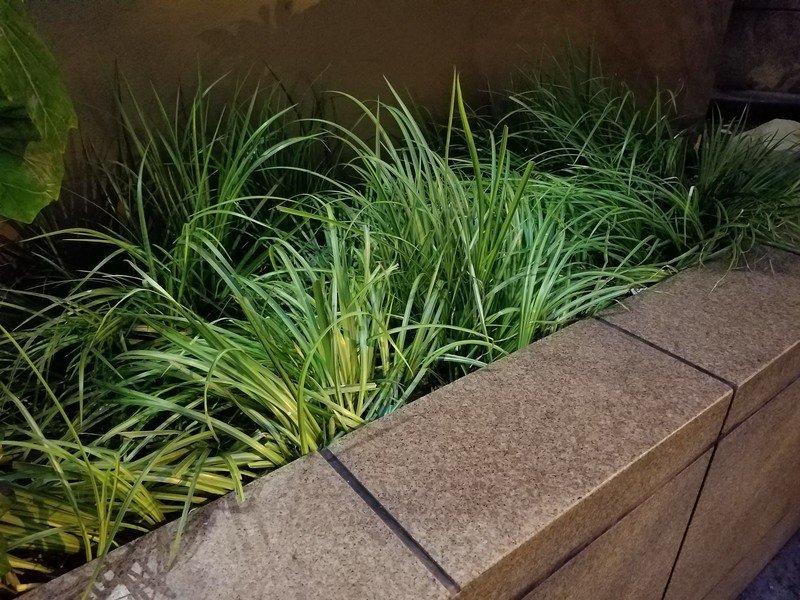

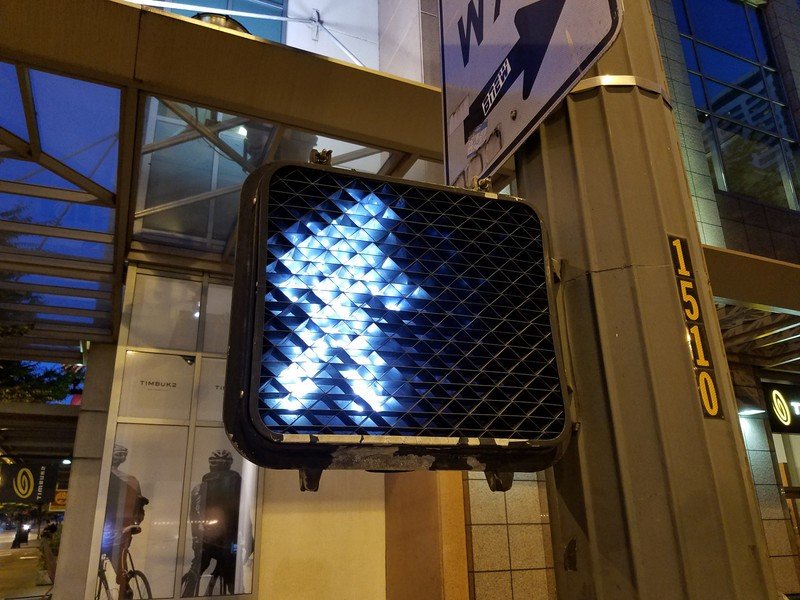
Almost as important as the image quality is the speed at which the Note 7 captures photos, which is lightning fast and upholds the high standard put out by its predecessors. A double-press of the home button launches the camera in well under a second, and you can capture right away. Burst shots are quick, and what continues to amaze me is that there's no difference in capture time between regular and HDR shots. Samsung's cameras continue to do really well at choosing between standard and HDR when set in auto mode, and that's where I left the camera a majority of the time.
Camera software
Just like many other aspects of the software, Samsung has taken a fresh, clean look at the camera interface. The experience is now a step simpler from what was already quite simple before, with even fewer buttons around the whole viewfinder — just the major toggles like flash and HDR are there, along with a dedicated video and gallery button on the opposite side.
Samsung is now emphasizing swiping in the camera interface, with a swipe to the left revealing a set of live filters to choose from, a swipe from the right bringing in the mode selector and a swipe down switching between the rear and front cameras. The app is extremely easy to use and is just as quick and responsive as ever. It just adds to the experience.
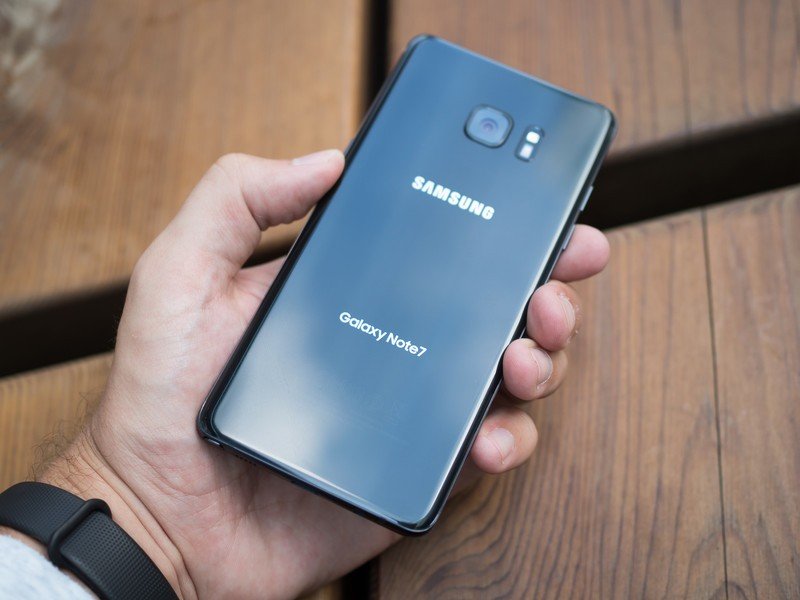
Actually using it
Samsung Galaxy Note 7 Daily use
Beyond the speeds and feeds, and talk about the different qualities of the hardware design, the Galaxy Note 7 is actually really great to use every day. Here are a few of my thoughts on the daily interaction with the phone.
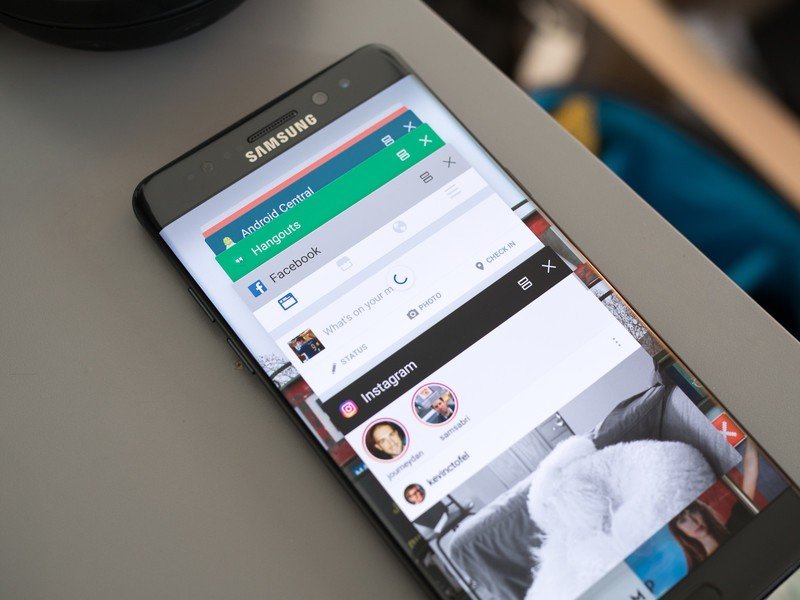
Performance
The performance story with the Galaxy Note 7 is identical to my time using the Galaxy S7, which until receiving this phone was my most-used device on a daily basis. With so much shared between the two this comes as no surprise, and just like the GS7 I'm extremely happy with how quick the Note 7 is in daily use. Aside from a couple of initial wonky hang-ups in the settings that I experienced in the first couple hours of use, I haven't had any sort of instability, jerkiness or unexpected slowdowns on the phone.
Multitasking, shooting pictures, listening to music while browsing, managing lots of emails and Slack messages, and all of my other daily functions went off without a hitch, as you would absolutely expect to be the case for a phone with a Snapdragon 820 processor and 4GB of RAM. And because of that, I never once wanted to wander into the "Device maintenance" part of the settings, which houses a bunch of "powered by Clean Master" tools to free up RAM, "sleep" apps and "optimize" your phone. Much of it is unnecessary, and even the parts that are genuinely useful for troubleshooting are globbed together with other useless snake oil. In general, you're not going to run into issues using the Note 7; and if you do, that Clean Master stuff isn't going to help much.

Battery life
With an additional 500 mAh to work with compared to the Galaxy Note 5, the Note 7's 3500 mAh cell keeps battery life solid but not exactly spectacular. Just as I found with the Galaxy S7 edge, which itself has a 100 mAh larger battery, the Note 7 can easily handle a full day of use — but it won't necessarily always do it with battery to spare. On a particularly tough day that required a lot of screen on time (outdoors at 100% brightness), lots of podcast listening, photos and network usage all on LTE, my battery could last a solid 15 hours — but it'd be completely dead at the end. On a lighter day, with what I would consider my "normal" use, the Note 7 was good for a full 17 hour day without hitting the 15% battery mark, which is more like what I'd expect out of a big phone.
One big factor in battery life, over my course of a week using the Note 7, was whether or not I chose to have Always On Display turned on. The heads-up screen looks great and is even better than what's available on the Galaxy S7, but adds a pretty considerable battery drain as well. In some informal testing I found it could easily drain between 5 and 10% of the Note 7's battery over the course of the day, which is starting to get to the point where you should really make a conscious decision about whether it's worth it. For what it's worth, Always On Display is not turned on by default on my T-Mobile model; an unlocked model offered for review to our own Daniel Bader has it enabled by default.
Good for a full day — the question is how much you'll have left in the tank
As I noted above when talking about the software, the new configurable Power saving mode can help eke out an extra hour or two if you find you're draining down your battery quickly, which is extremely helpful. Even though I don't necessarily think you'll need it but once or twice a week when you start to get into the danger zone on battery by dinnertime.
Even though we've changed connectors to USB-C, there's the exact same Adaptive Fast Charging tech inside the Note 7 as you'd find in the last-generation Samsung phones. That means it's pretty darn fast, and compatible with Quick Charge 2.0 chargers. Samsung includes its standard Fast Charging power brick in the box, which has a USB-A connector on it so you can use any USB-A to USB-C cable you like.
Of course you'll also find the same wireless charging setup as the last generation, including both Qi (which will you'll find in most chargers) and Powermat (which you'll find at the likes of Starbucks), as well as Samsung's own "Fast Charge" wireless charging — the latter requires a specific charger from Samsung or one of just a handful of other companies, but they've been around long enough that they're easy to find at a good price. And believe me, getting a Fast Charge wireless charger is worth it, especially if you're placing your phone down expecting to get any sort of a quick top-up to the battery.
An iris scanner
As one of the new features that separated it from the pack, and reiterated the company's focus on security, Samsung spent a notable amount of time at its launch event detailing the iris scanner technology in the Note 7. This is hardly a new feature in the world of phones, but it's a first for a Galaxy device and it's quite easily going to be the best-selling phone to ever have an iris scanner ... albeit those sales will in no way be due to the iris scanner's existence.
The scanner's hardware is actually a two-part affair — the combination of a special camera and an infrared light on the front of the phone can read your irises to determine if you're actually who you say you are. The setup process is simple enough, and lives right alongside the settings for your lock screen and fingerprints.
Right now, you can think of the iris scanner as being in the same position as Samsung's early fingerprint scanners before Marshmallow brought universal fingerprint APIs: right now, the iris scanner can only unlock Samsung's own apps, in addition to the lock screen (behind an extra swipe), Secure Folder and Samsung's KNOX security system. On the face of it that seems rather annoying and limited, which it is, and Samsung is working to expand the use of its Samsung Pass API to get banks and other app makers on-board with the tech.
The iris scanner is a complete miss this year — but it has potential for future iterations
But here's the important part of this whole situation: it doesn't really matter how many apps support the iris scanner, because the scanner system itself just isn't very good. From the get-go, the system is hyper-specific about how you hold the phone for it to recognize your irises properly — about 8 inches away from your face (but no closer, it warns), up at eye height and with your eyes open wider than usual for up to nine seconds. In other words: more than you want to deal with.
Beyond the oddity of how much extra work it takes to perform this every time you want your irises scanned, it just wouldn't ever reliably recognize my irises — despite multiple re-trainings of the system. I don't wear glasses or contacts, and tried in a variety of lighting conditions to no avail. At best I'd say the scanner recognized my irises about half the time within the nine-second limit before the scanner times out and asked me to enter a lock pattern or press my finger on the home button to authenticate. That's ... not very good. I'll stick to the fingerprint sensor, thank you very much.
To me, the iris scanner has already failed as a feature in this current hardware and software iteration. But it's the smallest of blemishes on an otherwise great phone, and the best part about it is that you'll never have to worry about it getting in the way once you turn it off.
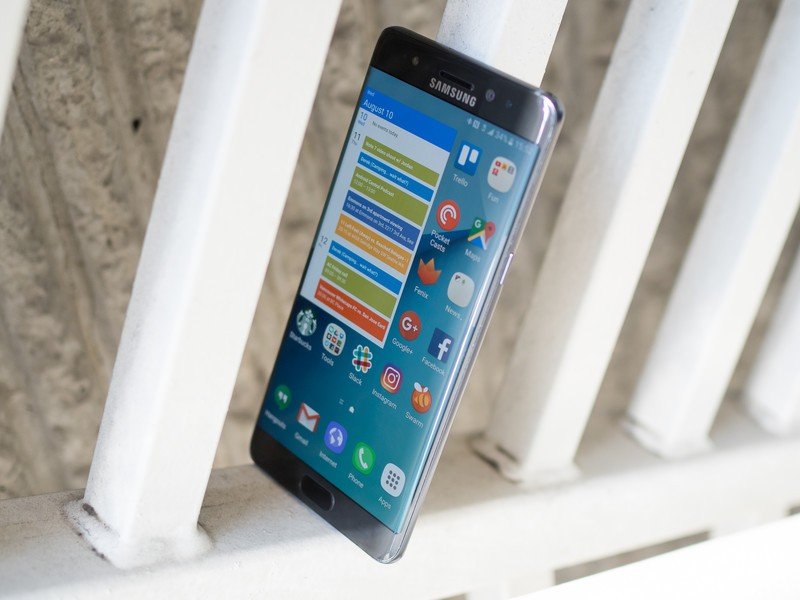
Worthy flagship
Samsung Galaxy Note 7 Bottom line
The similarities between the Galaxy Note 7 and the six-month-old Galaxy S7 edge have really clouded the vision of the Android enthusiasts who are thinking about what the latest Note brings to the table. Yes, there's effectively zero reason to buy a Galaxy Note 7 if you already have a Galaxy S7 edge — but Samsung never expected you to make that purchase in the first place. The Note 7 is designed to be a fantastic upgrade for those who have at least a year-old phone, and who want to experience all of the new features that they've seen advertised on the Galaxy S7 and S7 edge but weren't quite ready to buy at the time, or wanted a bigger phone that held the Galaxy Note brand.
And when you remember that the phone upgrade cycle amongst the broadest range of smartphone buyers is quite a bit slower than the enthusiasts, you can start to understand just how great of an upgrade the Note 7 will be for tons of people out there.
The Galaxy Note 7 has immaculately designed and crafted hardware, an industry-topping display, top-end internal specs to satiate all but the most avid enthusiasts, and it's all wrapped up in a water-tight enclosure. Even with all of that, Samsung still absolutely nails the biggest parts of the daily use experience — the software is quick, smooth and powerful, the camera is lightning fast and produces great photos, the battery offers ample longevity, and the S Pen is still the best smartphone stylus experience available today.
If you look at everything that the Galaxy Note 7 offers, I'm not sure what else you can honestly (and realistically, considering constraints and trade-offs of modern phones) ask for. It isn't a perfect smartphone, but that has and never will be the case with any phone — what matters here is that the Note 7 provides a fantastic experience through and through. And despite its congruence with the Galaxy S series that classic Note fans may bemoan, it's easily the best Galaxy Note that Samsung has ever made.
Should you buy it? Yes
The Galaxy Note 7 is the real deal, that much is clear. The only real question for you is whether it's worth the big price and whether it's a big enough upgrade over the phone you currently have. But no matter your situation, the Note 7 should at least be on your radar. And if you have the money to spend (or finance through a carrier), you should give it serious consideration as your next phone.
Where to buy the Galaxy Note 7
As you'd expect, the major U.S. carriers are all offering the Galaxy Note 7. It's pricey, for sure, but each one offers some sort of financing option to help lessen the up-front cost. There isn't a U.S. unlocked model at launch, unfortunately.
See at AT&T See at T-Mobile {.cta .shop.nofollow} See at Verizon See at Sprint

Andrew was an Executive Editor, U.S. at Android Central between 2012 and 2020.
